After our mind-boggling encounter with the limestone strata turned lurid pink by their high-pressure encounter with subduction, our band of merry geologists set off for a stroll:
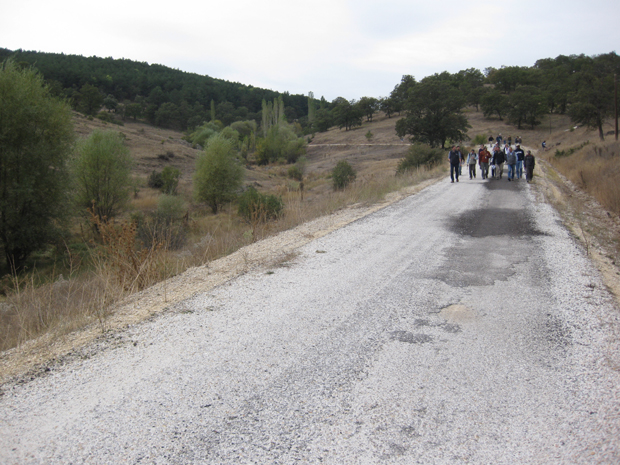
We began the walk in greenschist + blueschist mélange, as seen here with a Turkish 1-lira coin (26 mm diameter; about the same size as a U.S. quarter) for scale:
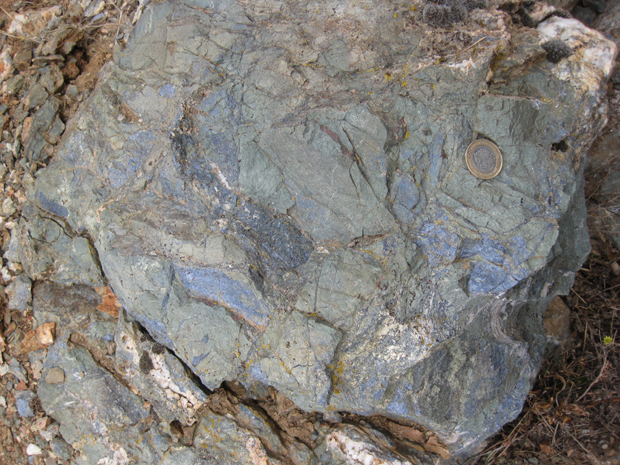
Then we crossed a structural contact into an ophiolitic mélange thrust sheet, a sheet of messed-up rocks that were interpreted as a subducted accretionary prism that formed due to the tectonic closure of a section of the Tethys Ocean.
There, we saw stuff like this serpentenite, the metamorphosed, crushed up remains of what used to be a perfectly decent slab of oceanic crust.
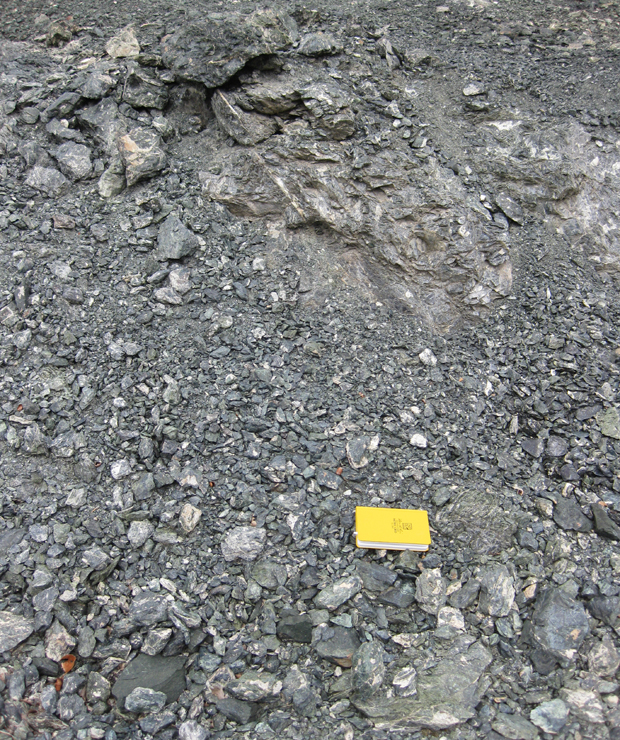
Zooming in on the cobbles of serpentenite, with a field notebook (long edge ~18 cm) for scale:

A cobble of serpentenite, showing its hundred attractive shades of green. (Sorry it’s a bit blurry…)
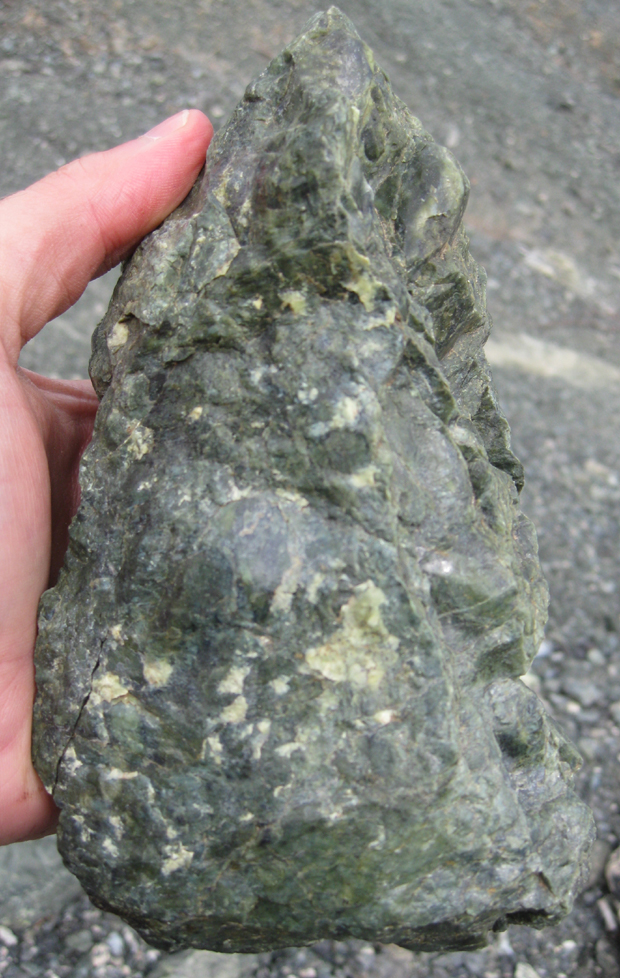
Serpentenite, with slickensides:
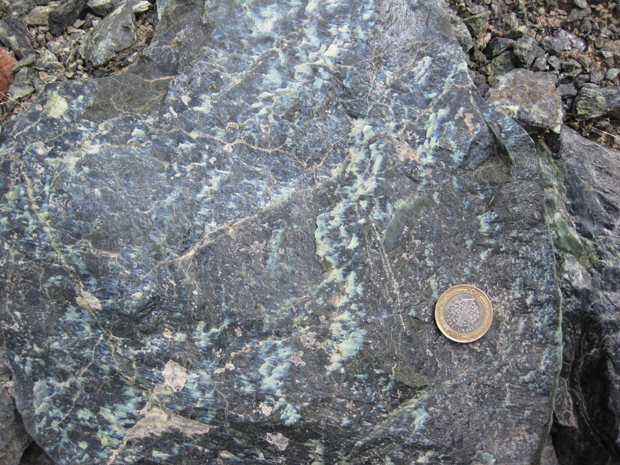
Also present were zones of red cherts, like this one:

If you look at these cherts with a hand lens, you will see small clear spheres. These are Jurassic-aged radiolaria (siliceous plankton) which serve to constrain the age of deposition. The cherts are interbedded with pelagic shales. In places, the chert strata preserve their original bedding, though sometimes it was oriented vertically:
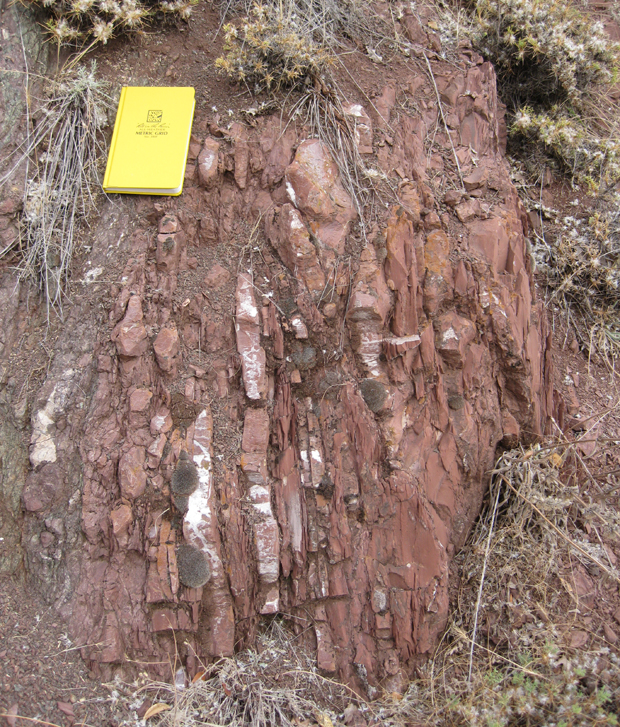
In a couple of places, the chert sections were coherent enough to preserve tight folds, like these:
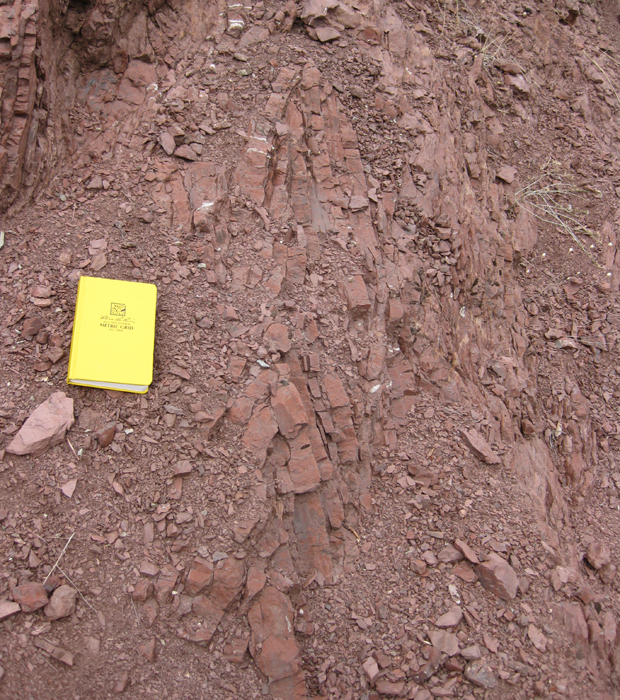
Rough annotation of the previous images, highlighting the bedding traces with white lines:
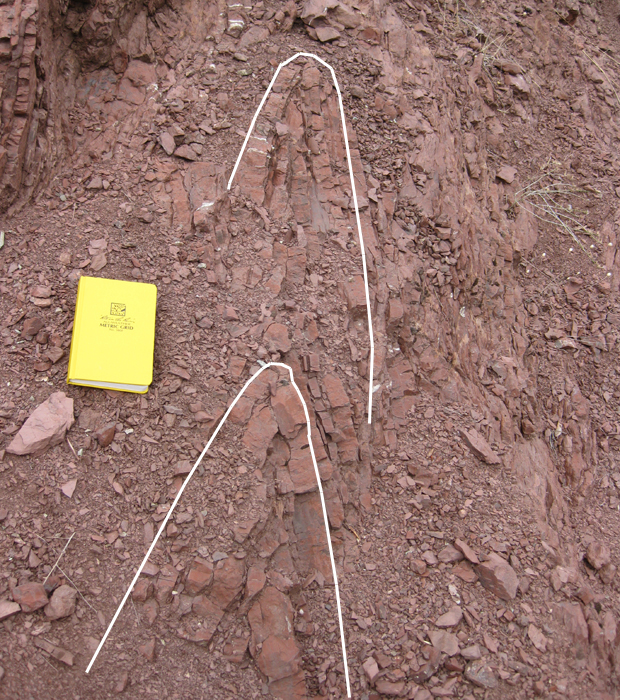
But most of the chert, and most of the serpentenite, was in chunks that looked something like this:
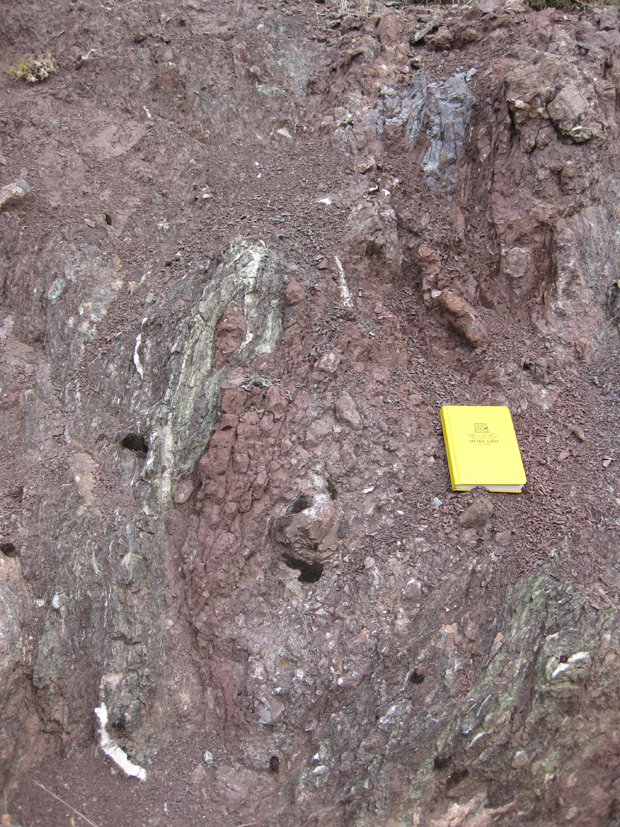
This Christmas-tree-colored ensemble is a mélange of rocks that were sheared out and tectonically jumbled in the subduction complex. More of this merry mixture:
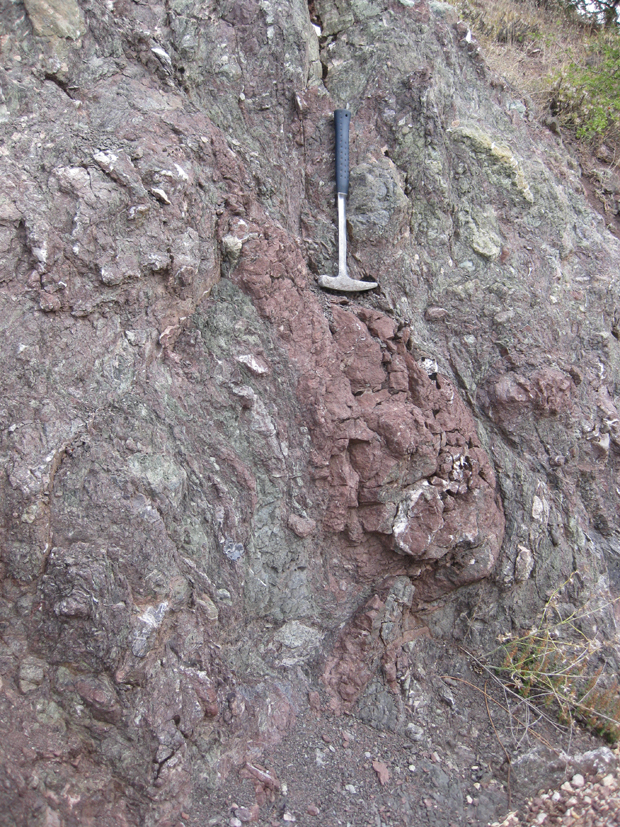
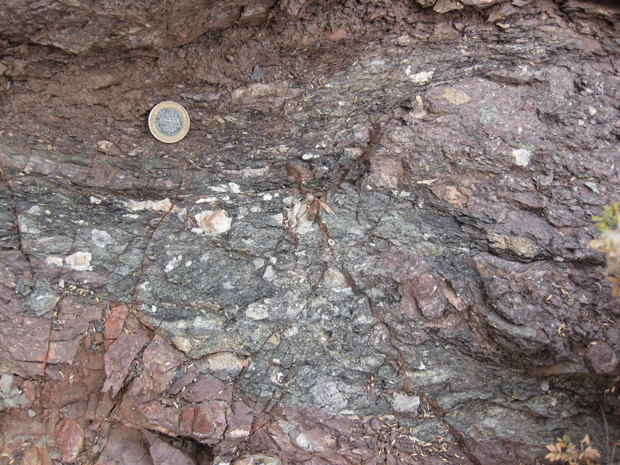
This one has a cute little folded vein:
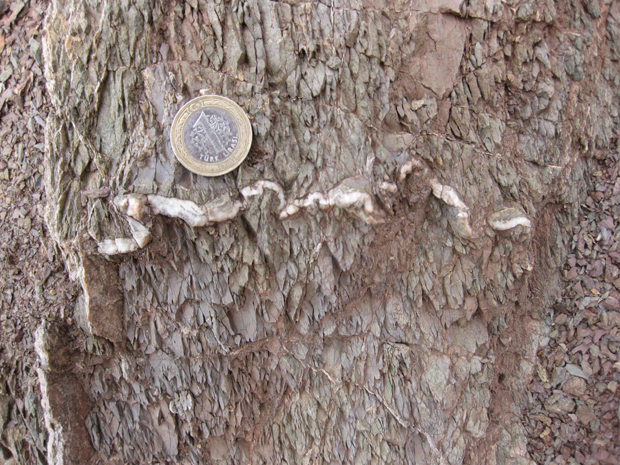
Once we got to the end of our walk, and back into the schist beneath the thrust sheet, we knew it by the big blue sign by the side of the road:

This blue rock is a lawsonite-grade blueschist, a very high-pressure (relative to temperature) rock, indicative of subduction zones.
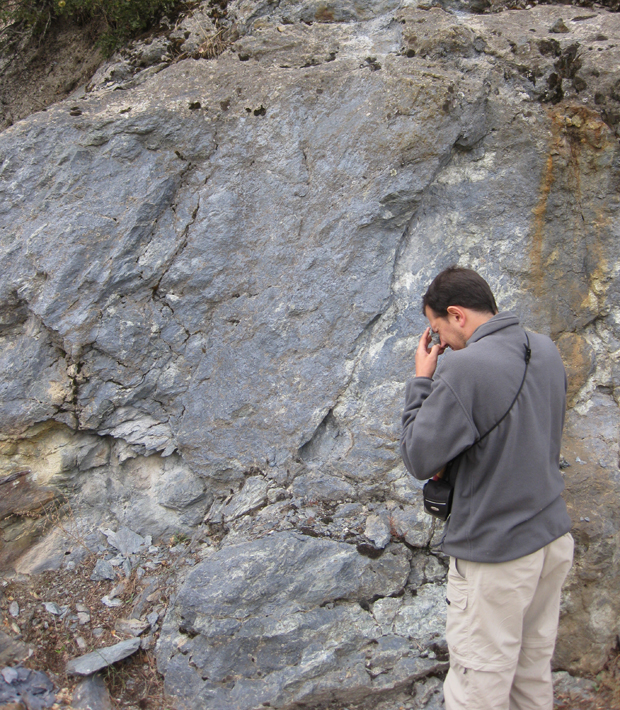
A nice big chunk of blueschist, too large to pack back home on the plane, but I took a couple pieces of it:
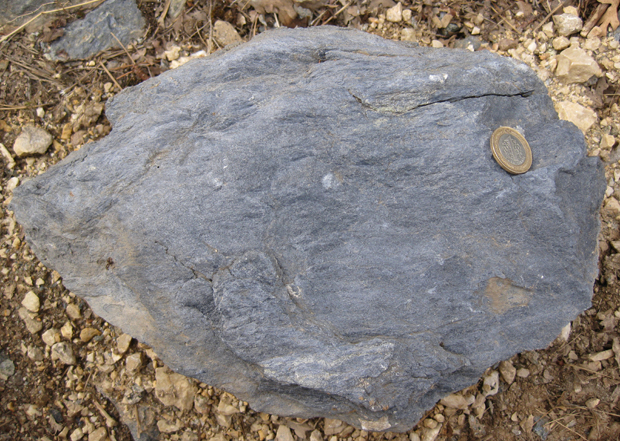
Donna Whitney and Christian Teyssier examine the blueschist outcrop:
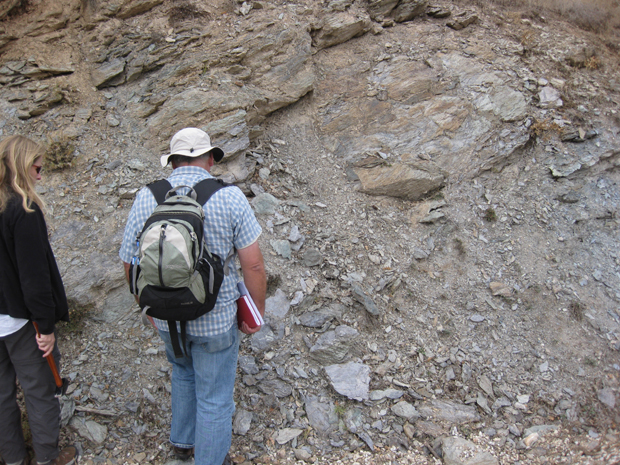

Here’s some very big crystals of lawsonite (the white/pink stuff), a mineral which speaks of a very low geothermal gradient:
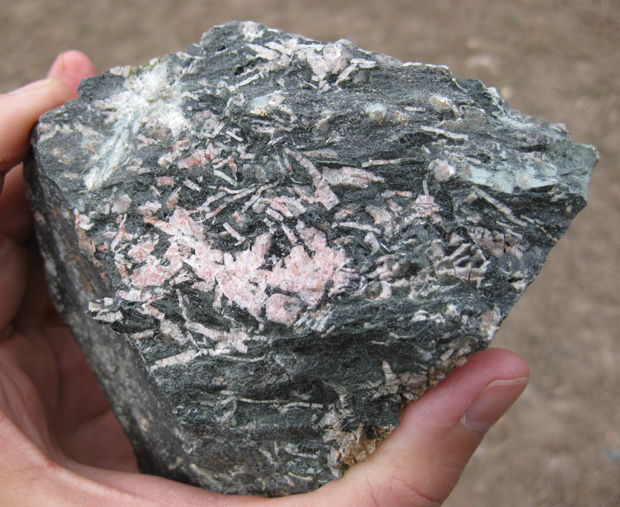
After a morning of serious geologizing, our tummies were grumbling. Time for our traditional Turkish picnic lunch:
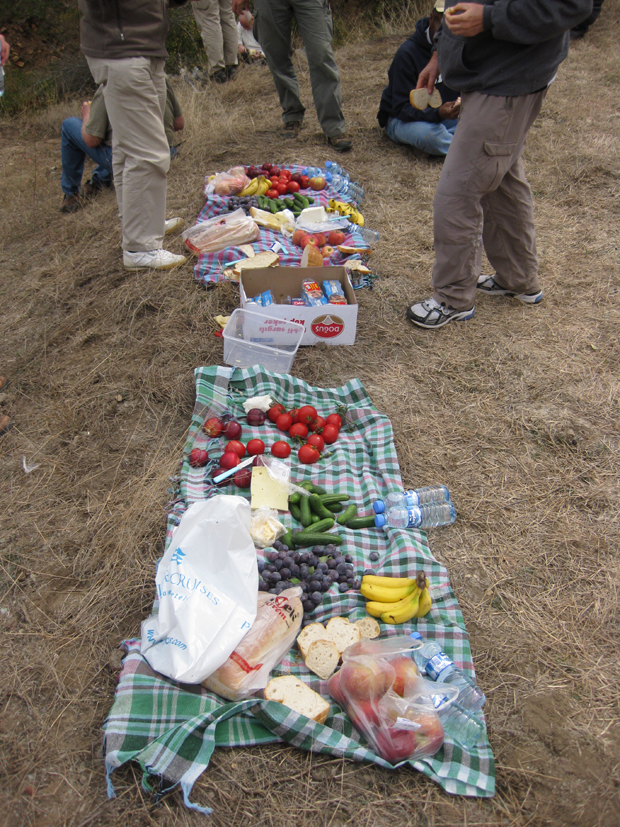
Fruit, cheese, tomatoes, cucumbers, and bread. Turkish bread is some of the best I have ever encountered: always fresh and pliant, with a crispy crust. It’s a shame that such bread in America is called “artisinal” and carries a pricetage to match. In fact, it’s making me hungry now just thinking about it… time to go grab some lunch before my afternoon Historical Geology class!
We continue with part 6 of the trip…

I was nodding my head along with your description of the subduction-related rocks, thinking Yes, we have these things in my own town of Oakland, California, even the nice blueschist–until I saw the lawsonite specimen. Now I have serious envy.